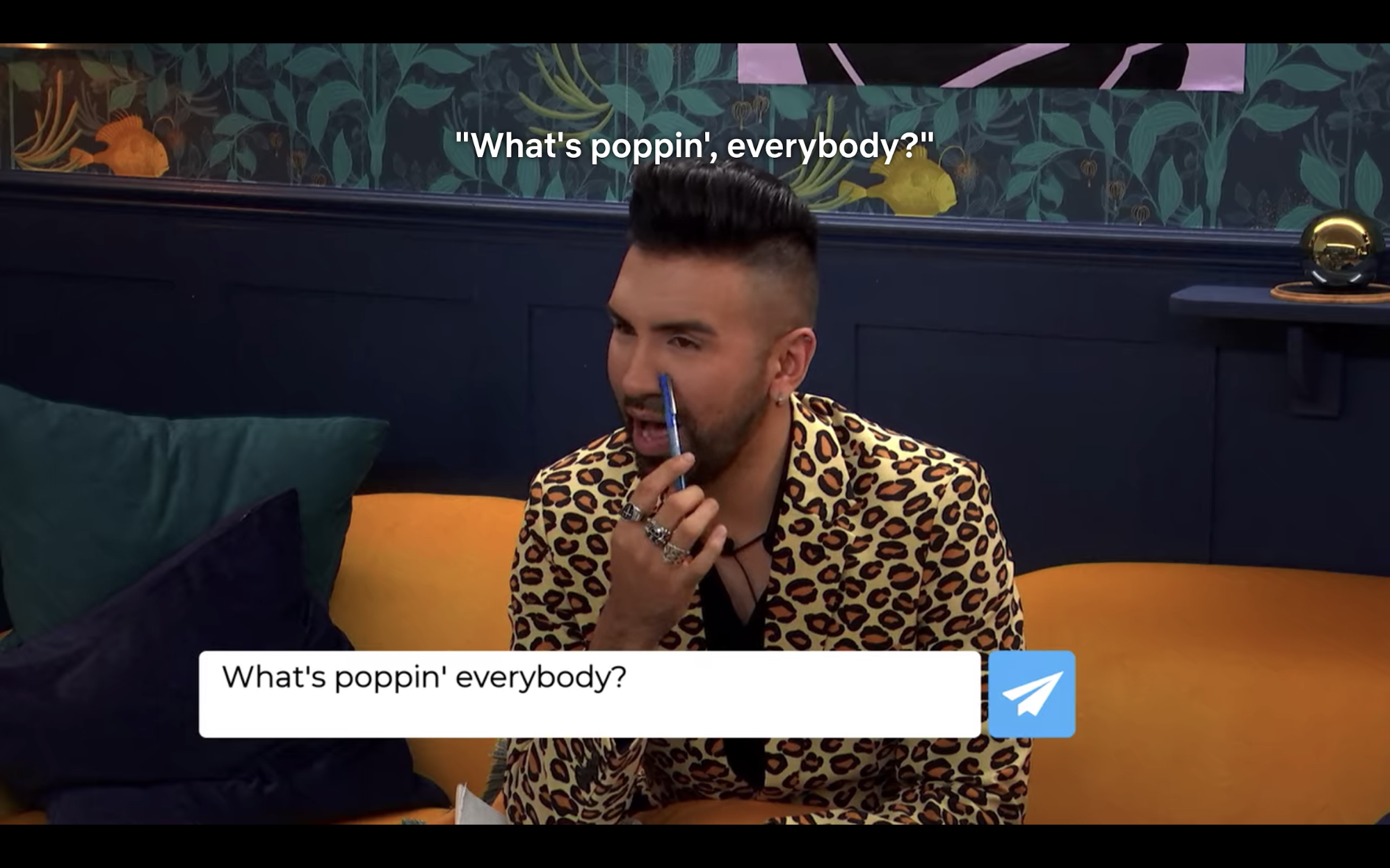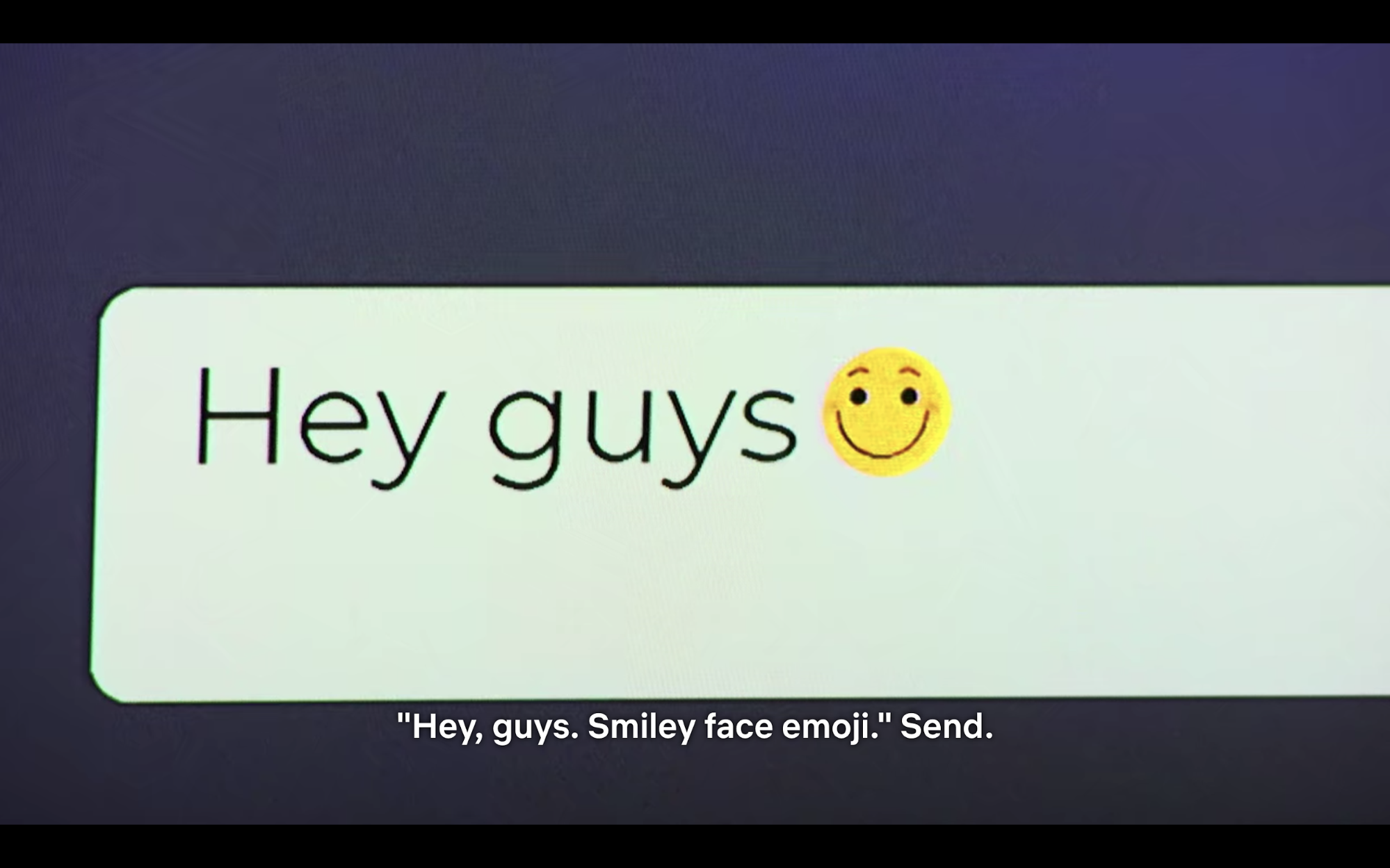It is increasingly rare to hear someone enthusiastically profess their love for a social media app. In the age of mass digital surveillance and brazen data profiteering, even a base level of trust can seem naive.
But on Netflix’s U.S. adaptation of the global reality show phenomenon The Circle, the titular application seems to perpetually amaze and delight its users. “Yo Circle, you are the shit!” one player exclaims in the first episode, a level of customer satisfaction that would make any UX designer weak. For a program that frequently features absurdist competitions involving cake decoration or hashtag generation, the “app” is the most glaringly inane part of an otherwise charmingly creepy show.
The premise of The Circle is simple, if strange: contestants are housed in discrete units within one apartment building, ostensibly living down the hall from each other while never meeting in person. Players instead communicate solely through a voice-activated app called The Circle, where they can update profiles with photos, relationship statuses, and insightful bios (“GOD knows my heart BUT the Devil knows my vocabulary!”).
The show allows players to “catfish” each other with fake names and photos, flirt with abandon, and otherwise manipulate fellow Circle users to claw their way to the top of the social food chain. In the process, the show attempts to raise questions brought on in a Web 2.0 world—What does digital authenticity look like? How do we understand nuance, humor, or sexual advances (eggplant emojis, of course) in the absence of in-person communication? And, perhaps most crucially, what is the proper length of a hashtag?
But unfortunately, whatever conclusions The Circle might draw about digital interactions are overshadowed by a spherically-shaped elephant in the room: the app is distractingly fake. It isn’t really the app’s interface—its generic icons and soft gradient backgrounds are ugly, sure, but no worse than your average B-round startup. What really grates at the very reality of this reality show is the basic believability of its central voice-recognition app.

LIke any B-round startup worth its weight in Soylent, The Circle’s developers Joi Palloi published a series of Medium articles outlining its strategy when building the application for the UK iteration of the show. Tellingly, the third proposed installment, “technical details behind the platform and the app,” is nowhere to be found. The first two posts detail the choices Joi Palloi made in developing the app’s interface, as well as designing a mobile app that accompanied the UK version of the show.
In the blogs, Joi Palloi outlined its approach to design—“we focused on creating a bespoke, secure application that felt very familiar to contestants and viewers, reflecting the conventions of social media experiences”—as well as third-party partnerships they used when building much of the technical functionality of the mobile app. Any discussion of the seemingly advanced voice recognition technology is conspicuously absent. In the first post, however, Joi Palloi hints at some off-screen TV magic: “We made sure that players could intuitively understand how to interact with the Circle while, behind the scenes, producers had access to robust functionality to allow them to manage players’ interactions.”
In case that wasn’t enough of a tip off that the show’s “artificial intelligence” is heavily augmented, The Circle’s creator Tim Harcourt told Vulture in a recent interview: “what we actually have is, when you talk to the Circle, there’s a producer who’s transcribing what you say. Instantly, that gets pushed to the next room. So there is some humanity in the app, and that’s a couple of producers whose job it is to take dictation from the players.” On the show, however, the players seem entirely bought in to The Circle’s innovative voice recognition technology.
Joi Palloi and Netflix did not respond to a request for comment.
To state the obvious: yes, reality shows are artifice. Storylines are concocted by producers, who feed it to the players, who are later edited for maximum drama in post-production. That’s why we love them! But for a competition that has been called “dystopic” and has garnered countless comparisons to shows like Black Mirror, basic technological plausibility is kind of the point. But instead, The Circle expects its “users” and viewers to suspend disbelief. In episode one, a contestant, Alana, asks, “Circle, can I see the photo of me with literally what I’m wearing right now?” Circle, observant and subservient, instantaneously pulls up a photo of Alana in the polka dot dress she is wearing. “Do we have emojis?” another contestant asks, mostly to herself, later in the episode. Without hesitation, Circle pulls up a list of emojis, then seemingly selects the perfect reaction face based on the prompt of “Can we put a wink or a side smile?”
What? Hasn’t the reliability of consumer-facing voice AI become its own punchline? Haven’t we given up on Siri’s ability to spell our names right, search for information on the internet, or even simply transcribe what we’re saying? We’re supposed to just sit there and believe that Circle can understand one character’s demand to “Take me to [the photo album] ‘GYM LIFE BRAH,’” or correctly add a crying-face emoji after another requests “that emoji that’s like ‘wahhh?"

Hoping to confirm that my cynicism was justified, I reached out to Eric Hall Schwartz, a reporter for the voice AI-centric tech blog VoiceBot.ai. But much to my dismay, he thinks that a decent chunk of Circle’s supposed intelligence is in the realm of plausibility. “The ability of AI to understand inflection and emotion is imperfect, but it's improving all the time.” However, he adds, “the tricky part is mostly that everyone speaks differently, so there's no generic way of programming.” The biases that plagues machine learning algorithms in other fields also impact voice AI as well—research shows that even the best speech recognition algorithms are significantly less accurate for women and people with regional dialects.
On a show with cast members hailing from regions as disparate as the Bronx and Dallas, it’s nearly impossible that an app like Circle would immediately be able to, for example, add implied periods and question marks based on vocal inflections immediately “out of the box.” And, judging by the various initial interactions players had with the circle (Alana tries to tap the mounted TV screen, to no avail), it seems unlikely that they had the prior trainings necessary for the app to understand that Joey pretty much always speaks in all caps.
As for the voice-based emoji dictation? According to Schwartz, “It's something that is possible but it's not something you can do with Siri automatically. If you're dictating a message through the iPhone and you say ‘heart emoji,’ it will literally type the words ‘heart emoji.’”
The image recognition based on vague descriptions was the least plausible (“there's certainly no prominent photo album searching at that level”), but gave Schwartz the most pause: “Someone could ask their device to pull up photos of you wearing certain outfits; they might be on your Facebook or pulling them from live camera feeds. The benign ways it's used in the show doesn't eliminate potential for misuse.”
Perhaps that’s the actual threat of The Circle: it almost certainly is centered on an app controlled by production assistants listening to commands off camera, a reminder that even the best Google AI is most likely repackaged human labor, but it normalizes the idea that a voice assistant knows everything about you. Even if voice-to-emoji technology isn’t perfected for another year or so, The Circle is already priming viewers for a world in which AI’s familiarity with our image and our voice is so assumed it becomes ingrained. In calling it a dystopia, we’ve accepted that The Circle is already some vision of some future. As long as future Siri gets my name right on the first try, I guess I’m okay with that.
from VICE https://ift.tt/38JOC37
via cheap web hosting
No comments:
Post a Comment